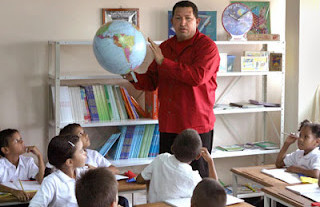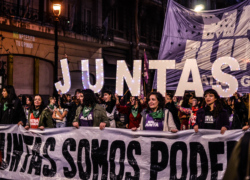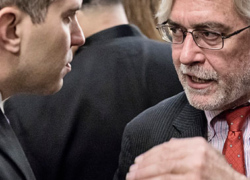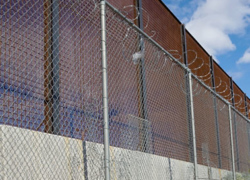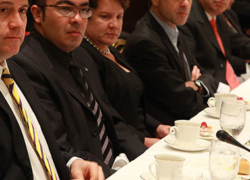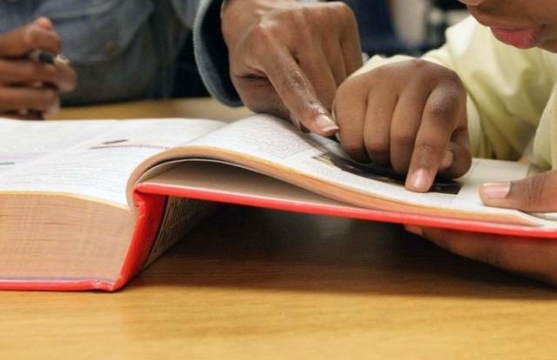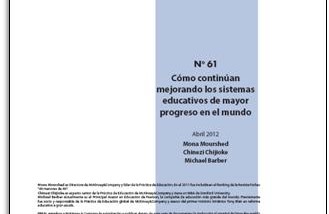Este artículo también está disponible en:
Inglés
“The chapter is probably one of the best accounts I have seen of the Finnish model. It is particularly strong on how history and culture shape the education system, which is naturally slippery and hard to address. And it does a good job of summarizing and drawing conclusions. That being said, it also fails to address some important, and possibly crucial, economic and political issues.
The Finnish model of public education includes (among other things) high standards for recruiting teachers, leading to a corps drawn exclusively from the top quarter of the talent pool; rigorous pre-service training that emphasizes subject matter expertise and practical experience; teacher autonomy combined with responsibility (teachers are expected to act like professionals rather than like blue-collar workers); extreme decentralization («schools are mostly a function of municipal government»); and strong accountability (operating almost exclusively at the individual and school levels, which the authors characterize as «almost entirely professional–no inspectorate or external assessments»).
I found especially interesting three aspects:
- The emphasis on systemic rather than programmatic reform: «The Finnish reforms…created a sector that functioned in a radically different way…it is the shape of this new sector, not continued programmatic initiatives that come from a central government, that accounts for Finland’s success.» (Is any country in LAC trying to do this?)
- An emphasis on «preparing people for an economy in which innovation and entrepreneurship will continue to be drivers of progress.» (Again, is any country in LAC trying to do this?)
- The decision in 1968 to establish «a common, untracked comprehensive school system that would serve students from all walks of life»
I was also struck by the emphasis on going beyond reading, math and science to include «creativity, problem-solving, teamwork and cross-curricular projects» (although there was no mention of how they do this).
And I was intrigued by the slow and steady strategy, based on building broad, multi-party political support for policies over many years.
But I was also left with a number of questions:
- How do they manage to attract the best and the brightest to teaching? Is it just high standards and the offer of professional autonomy (both of which raise the prestige of teaching)? There is almost no mention of salaries–except that they are in «…the middle range for European countries». How do teachers’ salaries compare with those offered by other professions in Finland that require similar levels of education? It may be that salaries are highly competitive in the Finnish labor market (as is the case in Cuba), or salaries may be less competitive but balanced by other aspects of the profession–not only prestige and autonomy, but also hours worked, vacations, fringe benefits and tenure (as is the case in the U.S.). Is there merit pay, or pay that varies by geography, student characteristics, or subject taught?
- What about teachers’ unions? Sahlberg and others say that all Finnish teachers belong to the teachers’ union and that teachers are highly professional and effective, implying therefore (but not quite stating) that unions should not be seen as an obstacle to quality education. This chapter says almost nothing about teachers’ unions. Anyone (particularly a Latin American) wanting to learn from the Finnish model needs to know: Are teachers’ unions national or local? What rights to collective bargaining and to strike exist? Is there a national teachers contract? Is membership obligatory? Are governments required to deduct dues from teachers’ salaries and pass them to the unions? There is nothing here about how much power teachers’ unions have–or the role they play. These are big issues in many countries, and understanding how they play out in Finland could be very useful. (Thinking more generally, these kinds of documents, prepared by international organizations, almost seem reluctant to discuss the dynamics of public sector unions. An OECD document on Mexico’s education system that I reviewed recently had the same deficiency—in a country that may have the largest and most powerful teachers union in the world.)
- How is teacher accountability operationalized? The authors characterize accountability as «built from the bottom up» and «almost entirely professional–no inspectorate or external assessments» What does this mean in practice? What happens if a particular school (or schools) has a high number of students who don’t meet learning standards? Can teachers be dismissed for poor performance? What kind of power (besides peer pressure) do municipal governments and principals have over teachers? Do they decide which teachers to hire and how much to pay them? Can they dismiss teachers, or deny salary increases, for poor behavior? Who ensures that principals and municipalities do their jobs?
- What is the role of the ministry? I was struck by how little the ministry of education is mentioned–beyond having established the basic parameters of the system over 40 years ago. Clearly, it does not directly provide education services. To what extent does it provide funding, set standards, oversee operations and intervene when problems arise? How does the minster spend his/her day (aside from celebrating the PISA results)?
- How did Finland develop the trust that appears to be crucial to the model? According to the authors, the government’s decision to trust teachers and to give them higher status (by requiring a university degree) «empowered teachers to practice their profession in ways that deepened the trust afforded them by parents and others in the community.» Is this fundamentally a result of culture, and therefore not very transferable to other countries?
- What are the political implications of decentralizing the education system all the way down to the municipal level, as Finland has done? Doing so puts school management in (or closer to) the hands of those who actually use the system, perhaps making it more likely that their interests will considered and served. By contrast, the traditional Latin American model puts most power at the center, and in the hands either of people who send their children to private schools (ministers, vice ministers) or of people committed to serving the interests of teachers (union leaders). Is this an important difference in the Finnish model?
- Is there an interesting element of competition and choice in the Finnish model? I was intrigued by one sentence, on p. 128, saying that academic upper secondary schools are funded based on student enrollment and therefore have to worry about competition from the vocational secondary schools. Does that make Finnish schools more responsive to the concerns of parents?
- Do private schools exist? The authors regularly refer to «a common, untracked comprehensive school system that would serve students from all walks of life», which has a kind of egalitarian, everyone-is-treated-the-same feel to it. But there is no mention of whether private schools have been prohibited, or if permitted, how large a part of the system they are, and to what extent they are used only by affluent families. A system that has outlawed private schools may be very different from one that has not.
In sum, I learned a lot about the Finnish model, but was surprised by its incomplete discussion of incentives and accountability, and failure to discuss teachers’ unions.»
